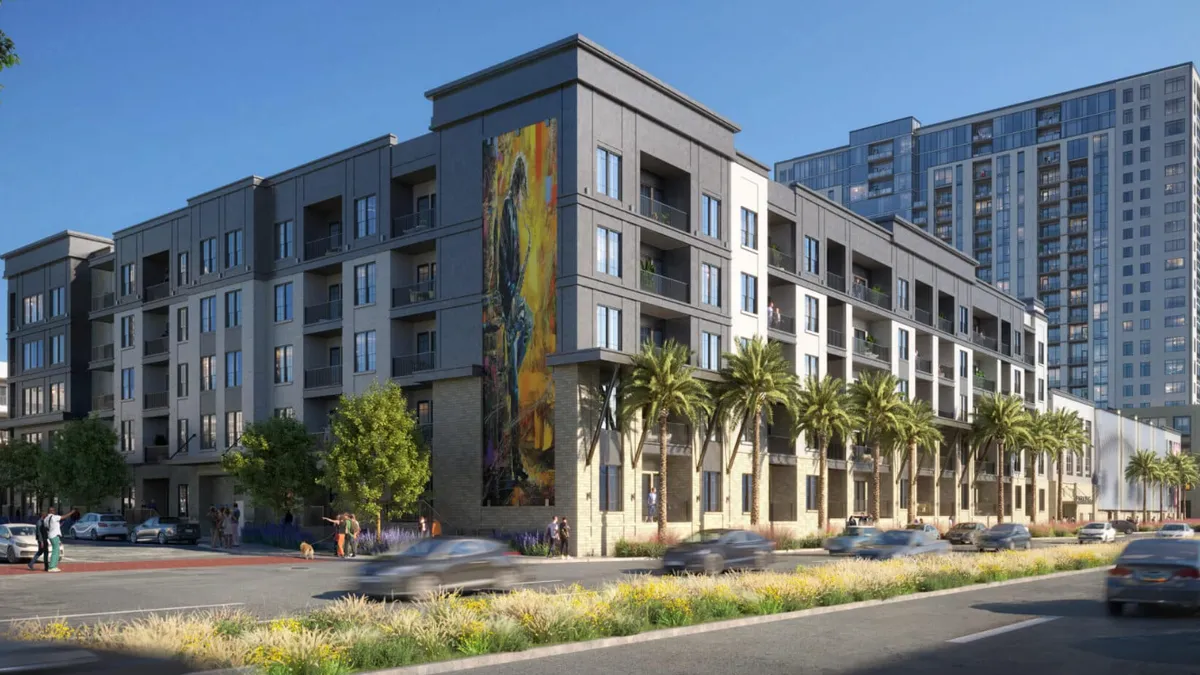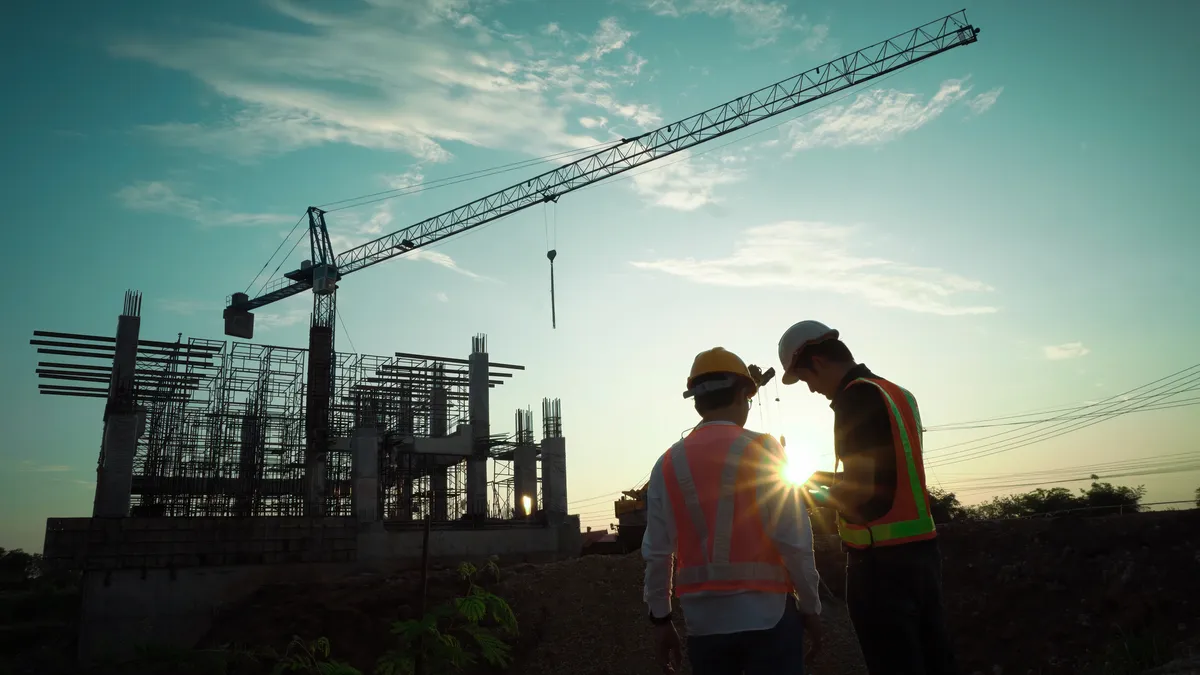Residential builders often look to the spring and summer selling season as the most important time for the housing industry. So has the market sizzled as many experts predicted? Based on July's stream of housing reports, the season so far has been more of a slow-burn than a sudden spark. To help consolidate the constant data reports released throughout the month, we chose seven of the most important July reports and broke them down into the good, the in-between, and the bad. But what do these really mean for the state of the housing market?
Good:
Foreclosure starts dip, from Realty Trac
RealtyTrac reported on July 15 that foreclosure starts fell below their pre-recession high, and noted they will likely continue to decline. The number of properties that began foreclosure proceedings during the first half of 2015 was 3% lower than during the first half of 2014.
Economists point to a smaller number of foreclosed properties on the market as a signal the economy is improving — as fewer people are defaulting on their home loans. Fewer foreclosed properties also means sellers of new and non-distressed homes don't need to compete with as many cheaper options when setting their home prices.
Homebuilder optimism reaches 10-year high, from NAHB/Wells Fargo
What better way is there to determine the state of the industry than by asking the builders? The National Association of Home Builders/Wells Fargo Housing Market Index, released July 16, reported homebuilders are feeling more confident in the single-family housing market than they have in a decade — since before the housing bubble peak.
The index reached a level of 60 in July. A reading of 50 or greater means more builders are optimistic rather than negative about their prospects for new home sales over the next six months.
After the report's positive findings were released, NAHB Chairman Tom Woods said he expects "a continuing recovery of the housing market" for the second half of 2015.
June existing home sales rise to 8-year high, from NAR
The National Association of Realtors was next in line to offer up sunny housing news, with its July 22 report of existing homes sales rising 3.2% between May and June — the highest rate in more than eight years.
All major regions saw sales gains in June, according to the NAR. The association reported existing sales this year are on track to hit the largest gain in eight years.
Although share of first-time homebuyers dropped to 30% from 32% in May, that percentage remained above the share of first-time buyers in the market a year ago, at 28%.
NAR Chief Economist Lawrence Yun called the 2015 spring buying season one of the best since the housing crisis. He said that rising mortgage rates likely contributed to the bump in June sales, as some buyers are choosing to take the leap into ownership rather than risk the chance that rates could continue to increase.
In-between:
Multifamily construction propels 9.8% surge in June housing start, from Commerce Department
In more of a lukewarm report, the Commerce Department announced on July 17 that June housing starts increased 9.8% from May to a 1.17 million annualized rate — the second-highest level since November 2007. Although that seems like a purely positive result, single-family starts actually saw a 0.9% dip. Multifamily construction — which grew 29.4% — propelled the bump in overall starts.
On the plus side, building permits surged, climbing 7.4% to an eight-year high.
Overall, multifamily data is an important factor in the number of starts, but single-family homes are considered a more telling indicator of economic stability. And the higher the number of starts on apartment buildings and condominiums, the greater the chance more tenants will remain tenants, rather than switch over to homeownership.
Pace of home-price growth slows in May, from S&P/Case-Shiller
At the end of the month, S&P/Case-Shiller released their home price index for 20 cities, finding that prices rose by 4.9% between May 2014 and May 2015. That growth rate was significantly lower than many economists forecast.
While some economists prefer values to rise more quickly, others say a slower pace means home prices are becoming more attainable for buyers — rather than continuing to soar past inflation and wage gains.
June pending home sales dip, from NAR
The NAR offered another dose of neutral news on July 29, as it revealed pending home sales slipped slightly in June, after reaching a nine-year high in May. The 1.8% decrease in the number of homes under contract was the first dip in five months, but the level of pending sales didn't slip too far past May's high. The number was also 8.2% higher than during June of 2014.
While homes under contract indicate future completed sales, they don't often hold as much significance as new and existing home sale results.
Despite the slight decline in June pending sales, Yun said it was unlikely to affect the "solid pace of home sales this summer."
Bad:
June new home sales unexpectedly fall, from U.S. Census Bureau and HUD
In the only truly disappointing report of the month, the U.S. Census Bureau and HUD announced on July 24 that sales of new, single-family homes fell 6.8% between May and June. However, that figure — the lowest in seven months — was still 18.1% higher than during June of 2014.
June's decline in new home sales — which represent about 10% of the total housing market — put a slight damper on industry optimism. After May's 2.2% hike in new home sales, some economists warned that tight housing inventory could slow the rising sales. This issue has proven especially applicable for new-home buyers, as they have had increasing difficulty finding affordable starter homes.
Report takeaways
The busy selling season still has a lot of time left, and these reports offer up a mostly healthy picture of the housing market's current state. Positive and in-between reports strongly outweigh the negative one, and most economists have predicted continued growth for the market.
The new home sales report, however, cast a slight shadow over the sunny disposition of industry experts. New home sales may not make up the majority of the housing market, but they still play a significant role in the overall success of the industry.
Ongoing struggles for the market can likely be attributed to the lack of first-time buyers and increasingly tight inventory. If millennials and others seeking out starter homes can't find anything within their price range, they are forced to remain renters.
Still, the strengthening job market and slowdown of home price growth are signs the market could soon become more welcoming to first-time buyers.
















